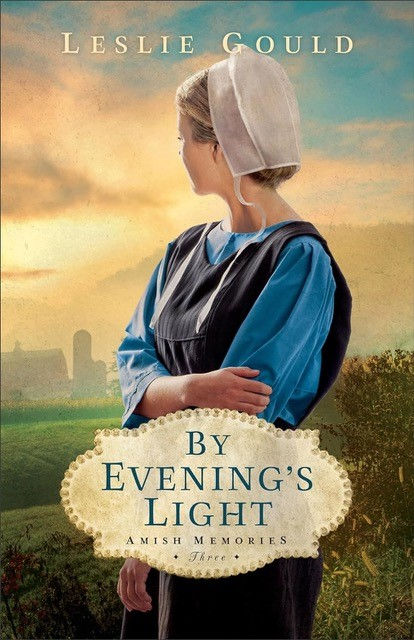Intersection Column | From Museum Curator to Novelist
- mtlmagazine

- Aug 8, 2024
- 4 min read

by Leslie Gould
Nearly forty years ago, as a twenty-three-year-old just out of college, the Southern Oregon Historical Society hired me as the curator of their Chappell-Swedenburg House Museum in Ashland, Oregon. I’m still grateful for their trust in me to preserve and exhibit the history of the idyllic town, located fifteen miles from the California border.
I thought about my time as a museum curator as I wrote By Evening’s Light, which is a dual-time story with interconnected historical and contemporary threads. My protagonist, Treva Zimmerman, is in her early twenties and struggles with the loss of her parents, her loyalty to her remaining elders, and her commitment to the family farm—a setting that’s been home to generations of Zimmermans. As she listens to her elderly aunt Rosene’s stories from post-World War II Germany, Treva finally comes to understand the hold her family’s past has on her own future.
Although I’m now closer to Rosene’s age than Treva’s, I vividly remember my early twenties and the uncertainties ahead. I had graduated with a bachelor’s degree in history and communications, and it was no surprise that some people, including myself, wondered if I would find a professional position that would actually use my education. I started out volunteering at the museum. To my delight, I was soon hired as an assistant. Then, a few months later, as the curator.
Besides my love of history, what drew me most to the Chappell-Swedenburg House was the setting: the stately Colonial Revival building sits back on an expansive lawn of what is now Southern Oregon University and has been meticulously renovated. But soon I was equally drawn to the entire setting of the Ashland area, from the downtown Plaza to the nearby forests.
While I worked at the museum, I curated an exhibit about children in Ashland during the early 1900s that was titled “There’s No Place Like Home.” The people I featured were lifelong residents of Ashland. I interviewed them and learned about much more than childhood stories, collected artifacts from their lives, had childhood photographs of them blown up into life-sized pictures, and then invited the school children of Ashland to visit the museum, which they did, class after class, along with community members and tourists.
As curator, besides designing exhibits, I conducted oral history interviews and researched everything from the Native Americans living in the area before European explorers arrived to early settlers to the development of the area. I also collaborated with artists who worked for the renowned Oregon Shakespeare Festival, founded in Ashland in 1935, on exhibits and living history projects.
When I wasn’t working I dabbled—some—in writing contemporary fiction, but I don’t remember once thinking I wanted to write historical fiction. And fifteen years later when my first novel Garden of Dreams was published, it was contemporary fiction. And set in Ashland.
It wasn’t until several years later when I was at a writers’ conference, that I considered writing historical fiction. As I chatted with a high school history teacher who wrote contemporary novels, I asked if she’d considered writing historical stories. As I spoke, I realized I could ask myself the same question. So I did.
My answer to my question wasn’t to write historical novels, but to write dual-time stories. By Evening’s Light is the twelfth dual-time novel I’ve written and the third and last book in my Amish Memories series. Similar to when I produced exhibits at the museum, my primary interest in writing dual-time stories is juxtaposing the past and the present. I especially enjoy contrasting characters from each, finding the bridges that connect them, and structuring the stories—that just like an exhibit—lead readers to discover things about themselves and their own lives.
The historical thread of my Amish Memories series begins in the late 1930s in pre-World War II Germany with a Mennonite family and concludes in the late 1940s in Cold War Germany. The stories span the lifetime of Treva’s aunt Rosene, who continues to process her life—including her early twenties—throughout the series. Her story in particular, leans heavily on William Faulkner’s claim that, “The past is never past. It’s not even dead.”
As I finished By Evening’s Light and thought about my own life during my early and mid-twenties, I remembered the residents in Ashland and their lifelong stories of living through the many changes of the 20th century and their lessons of finding a place of belonging, wherever you may be.
I came to writing dual-time novels in a roundabout way a decade ago, but I’d built the foundation for writing those stories long, long ago. Whether in a museum exhibit or a dual-time story, the past does shape the present. And the future.

About the Author
Leslie Gould is a Christy Award–winning and bestselling author of over forty-five novels, including four Lancaster County Amish series. She holds a bachelor’s degree in history and an MFA in creative writing. She enjoys church history, research trips, and hiking in the Pacific Northwest. She and her husband live in Portland, Oregon, and have four adult children and two grandchildren. Learn more at LeslieGould.com.
About the Book
Torn between the expectations of her community and her own desires, Treva Zimmerman seeks to follow her own path—but all that changes when her aunt Rosene suffers a heart attack. As her aunt recounts her own past—a poignant journey through Cold War Germany and a fervent desire to escape her Plain life to search for a lost love—Treva is determined to discover the whereabouts of her aunt’s former sweetheart.





Comments